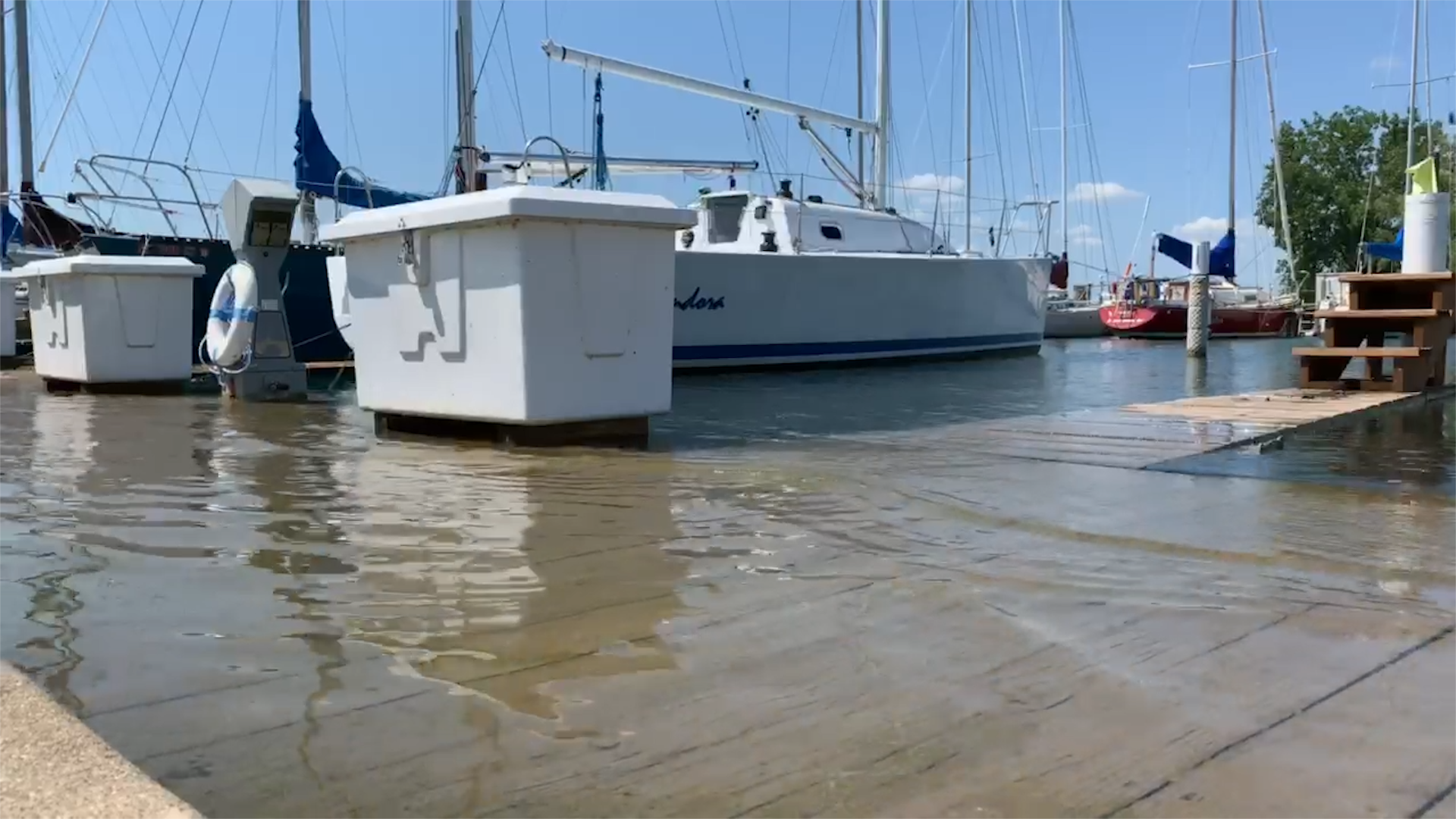
Great Lakes levels have started to decline from record summer levels, but lakefront property owners, boaters and beachgoers should remain cautious.
That’s the watchword from the U.S. Army Corps of Engineers as of Aug. 20.
Levels have been at 35-year highs, according to Keith Kompoltowicz, the chief of hydrology at the Army Corps’ Detroit office. He cautioned that even declining, they’ll still be high as the fall storm season approaches.
“During the fall, there’s a greater chance for powerful storm systems that can cause rapid fluctuations in water levels and tremendous waves along the Great Lakes coasts,” Kompoltowicz said in a recent media briefing call.
The pounding wave action can cause erosion, damage to shoreline structures and flooding.
The Army Corps expects lake levels to remain higher than normal for the next six months and is prepared to continue support for local communities, according to Patrick Kuhne, the Army Corps’ emergency manager in the Detroit office.
Local leaders are telling residents to leave any temporary flood control measures in place until next year, Kuhne said.
The Army Corps is advising people to avoid walking on breakwater walls as higher water levels can increase the risk of falling into turbulent waters as surfaces become slippery. Submerged structures like piers and breakwalls that are normally visible but are now submerged are another hazard.
People “may not be aware of the powerful impact that strong winds, storms and high water levels can bring” in the late-August through December storm season, according to the Army Corps website.
Through July, 35 people have drowned in the Great Lakes, though not all of them have been at harbor structures. It’s a “grim reminder” of the risks when near water, the site says.
The website also has a sandbagging instructional video to illustrate the proper use of a sandbag for property protection.
Longer term, the Army Corps hopes to do a study of Great Lakes coasts to determine which measures, in addition to hard surfaces, can increase resiliency, according to planning chief Nick Zager. The study has not yet been funded.
The Army Corps of Engineers has three Great Lakes district offices: Detroit, Buffalo and Chicago. Each website has information on lake levels.
For more on lake levels, checkout Great Lakes Now’s monthly program airing Tuesday, Aug. 27th at 7:30p ET on Detroit Public TV (Check your local listing for times and dates).




